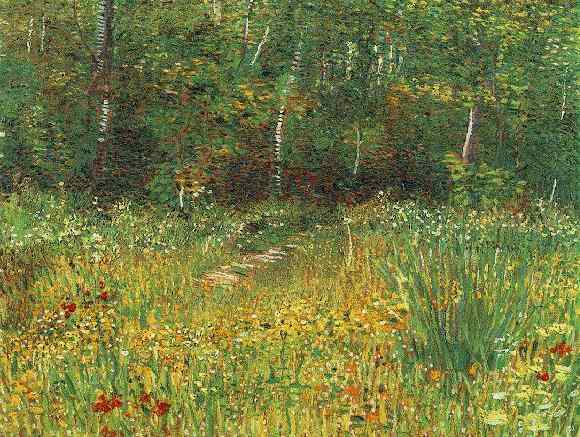∞
The Five-Fold BookThe Bible begins with a five-fold work consisting of Genesis, Exodus, Leviticus, Numbers, and Deuteronomy. In our Bibles these appear to be five separate books, but they are traditionally understood as one cohesive work. This section is sometimes called the “Pentateuch” (five-fold book). Other passages in the Bible speak of this as the “Law,” the “Law of Moses,” the “book of Moses,” or simply “Moses.”
Tradition says Moses wrote this work, and Scripture itself supports this tradition. For example, Deuteronomy 31.24-29 portrays Moses completing the book and giving it to the Levites to be kept beside the Ark of the Covenant in the Tabernacle. When Jesus quoted from this part of the Bible, he referred to Moses.
Though often referred to as the “Law,” that title can be misleading. The Hebrew word is “Torah,” which refers to a father’s instruction. The Torah instructs us by telling God’s story from creation to the days just before Israel entered the Promised Land after Moses’ death. It includes descriptions of the laws and ordinances God gave Israel at Mt. Sinai, but these are by no means the main focus of the work. I will refer consistently to this part of the Bible as the Torah.
The Torah is the Bible’s foundation. All the great themes that are developed and brought to completion in the Bible are introduced here. It is like a seed that contains the entire story that unfolds throughout the rest of its pages.
Why Moses Wrote the Torah
However, the Torah is also a work that has its own integrity, and we should read it that way. In order to grasp its meaning, we must first remember who wrote it, the audience that received it, and the circumstances they were in when it was given to them.
Moses wrote this book for the generation of Israel that had come out of the wilderness from Mt. Sinai and was preparing to enter the Promised Land under Joshua. Their parents had celebrated the first Passover, been redeemed from Egyptian slavery, crossed the Red Sea, traveled to Mt. Sinai, entered into a covenant with God to be his chosen nation, rebelled against him early and often, and were ultimately sentenced to perish in the wilderness. This younger generation had now come of age and was ready to take up the task of living under God’s laws in the Promised Land.
If we keep this in mind, many details in the Torah become clear. For example, why did Moses tell the story of creation as he did, in Genesis 1-3?
- God transforming the wilderness and preparing a good land for his people
- God separating the waters to prepare the good land
- God setting the lights in the sky for signs and seasons (in the Torah this phrase refers to the festivals of worship God gave in the law)
- God creating in six days, then resting and consecrating the Sabbath
- God placing his people in a good land of abundance
- God giving his people a commandment that they were to obey
- God exiling his people from the good land when they disobeyed him
One passage in the Torah that states this explicitly is Deuteronomy 30. Here is a key portion of that chapter, which specifies Moses’ challenge to those about to enter the land.
...See, I have set before you today life and prosperity, death and adversity. If you obey the commandments of the Lord your God that I am commanding you today, by loving the Lord your God, walking in his ways, and observing his commandments, decrees, and ordinances, then you shall live and become numerous, and the Lord your God will bless you in the land that you are entering to possess. But if your heart turns away and you do not hear, but are led astray to bow down to other gods and serve them, I declare to you today that you shall perish; you shall not live long in the land that you are crossing the Jordan to enter and possess. I call heaven and earth to witness against you today that I have set before you life and death, blessings and curses. Choose life so that you and your descendants may live, loving the Lord your God, obeying him, and holding fast to him; for that means life to you and length of days, so that you may live in the land that the Lord swore to give to your ancestors, to Abraham, to Isaac, and to Jacob.This is the message that Moses wanted to leave with his audience, and it summarizes the Torah’s story, its main themes, and the future prospects of the people of God.
When we put ourselves in the sandals of those who stood on the banks of Jordan, waiting to enter the Land, we can read the Torah with more insight and understanding.


I commend you, Chaplain Mike, for teaching that the Bible should be read with the audience in mind. So many churches and Christians today teach that the Bible should be read as if God is speaking to you. Besides the fact that acting in such a way makes the Bible almost a magic book, it also makes it difficult to experience the themes of the Bible and, if a person reads it in that manner, he would read Jesus through the eyes of a modern American. (Hence the Baptist churches that have pictures of Jesus with comparatively short hair and beard).
ReplyDeleteI also like the way that you portray the Genesis Creation story as also an allegory of the wilderness. Very interesting.